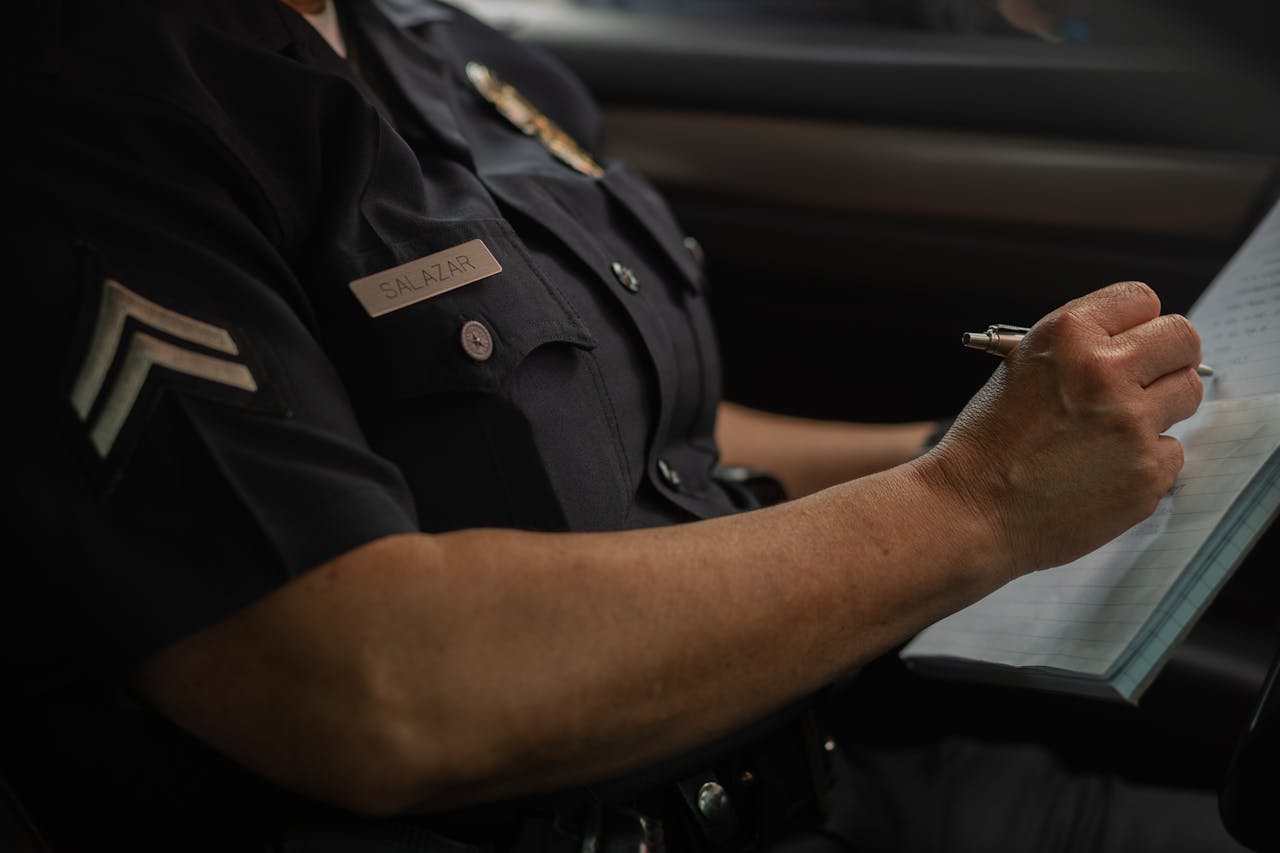The Symbolism of Police Patches
Police patches are more than just pieces of fabric sewn onto uniforms; they are symbols of authority, honor, and service. For decades, these patches have evolved in design, material, and functionality, reflecting the changing times and the growing demands of law enforcement. From classic emblems that represented early police forces to today’s cutting-edge patches with integrated technology, the transformation of police patches tells a fascinating story of adaptation and innovation.
In this article, we will trace the journey of police patches from their early days to the present, exploring how they have evolved in design, materials, and significance. We will also look at the future of police patches and how they continue to play a crucial role in law enforcement. Whether you’re a police officer, a historian, or simply interested in the history of law enforcement, this comprehensive overview will provide valuable insights into the transformation of police patches.
The Early Days: Classic Police Patches
1. The Origins of Police Patches
The history of police patches dates back to the 19th century when formal police forces were first established. These early patches were simple in design, often featuring the name of the city or town and the word “Police.” The primary purpose was identification, allowing citizens to recognize police officers easily.
Example: The New York City Police Department, one of the oldest police forces in the United States, introduced its first patch in the mid-1800s. The design was straightforward, with the city’s name and “Police” prominently displayed.
2. The Evolution of Design
As police forces grew and became more organized, the design of police patches began to evolve. Departments started incorporating symbols, shields, and other elements to represent their specific jurisdiction and values. These designs often included local landmarks, state seals, and mottos.
Example: The Los Angeles Police Department’s patch, introduced in the early 20th century, featured the city’s seal, symbolizing the department’s connection to the community and its commitment to service.
3. Materials and Craftsmanship
Early police patches were typically made from wool or felt, with embroidered designs. The craftsmanship was detailed, reflecting the pride and professionalism of the police force. These patches were durable, designed to withstand the rigors of daily duty.
Example: The Chicago Police Department’s early patches were crafted from high-quality wool, with intricate embroidery showcasing the city’s iconic skyline and police badge.
The Mid-20th Century: Modernization and Standardization
4. The Rise of Standardized Designs
By the mid-20th century, there was a push towards standardization in police patches. This period saw the introduction of uniform designs that were consistent across various departments. Standardized patches helped create a cohesive and professional appearance for police officers.
Example: The Massachusetts State Police adopted a standardized patch design in the 1950s, featuring the state seal and a simple, clean layout. This move towards uniformity helped enhance the professional image of the department.
5. Advances in Materials
The mid-20th century also brought advancements in materials used for police patches. Synthetic fibers such as nylon and polyester became popular, offering increased durability and resistance to wear and tear. These materials also allowed for more vibrant colors and detailed designs.
Example: The Texas Highway Patrol transitioned to polyester patches in the 1960s, which provided greater durability and color retention, essential for officers working in harsh outdoor environments.
6. Reflective and High-Visibility Features
Safety became a significant concern during this period, leading to the introduction of reflective and high-visibility features in police patches. These features enhanced officer visibility during nighttime operations and in low-light conditions.
Example: The California Highway Patrol incorporated reflective materials into their patches in the 1970s, improving officer safety during traffic stops and roadside incidents.
The Late 20th Century: Technological Integration
7. Introduction of Velcro and Modular Patches
The late 20th century saw the introduction of Velcro and modular patches, allowing for greater flexibility and customization. Officers could easily attach and remove patches based on their specific roles and assignments, enhancing functionality and convenience.
Example: Special units within the New York Police Department, such as the Emergency Service Unit, began using Velcro patches in the 1980s, allowing officers to quickly switch between different identification and unit patches.
8. Specialized Unit Patches
As police departments expanded and specialized units were created, the need for distinct patches for these units grew. SWAT teams, K-9 units, and other specialized divisions developed their own unique patches, reflecting their specific roles and expertise.
Example: The Los Angeles SWAT team introduced a distinctive patch featuring a tactical emblem and the SWAT acronym, symbolizing their specialized training and capabilities.
9. Commemorative and Event-Specific Patches
The late 20th century also saw the rise of commemorative and event-specific patches. These patches were created to mark special occasions, anniversaries, and significant events, serving as collectibles and symbols of pride.
Example: The Washington D.C. Metropolitan Police Department issued commemorative patches for the bicentennial celebration in 1976, featuring patriotic designs and historical references.
The 21st Century: Cutting-Edge Innovations
10. Integration of Smart Technology
In the 21st century, police patches have embraced cutting-edge technology. The integration of smart technology, such as RFID chips and QR codes, has revolutionized the functionality of police patches. These advancements enhance identification, access control, and data management.
Example: The Toronto Police Service introduced smart patches with embedded RFID chips in the early 2010s. These patches allow for secure access to police facilities and real-time tracking of officer movements, improving operational efficiency and security.
11. Enhanced Durability and Functionality
Modern police patches are designed with enhanced durability and functionality in mind. Advanced materials and manufacturing techniques ensure that patches can withstand extreme conditions, from harsh weather to physical abrasion.
Example: The Royal Canadian Mounted Police (RCMP) adopted new patches made from advanced materials that are resistant to water, UV rays, and chemicals, ensuring longevity and reliability in diverse environments.
12. Customization and Personalization
Today’s police patches offer unprecedented levels of customization and personalization. Departments can design patches that reflect their unique identity, values, and community engagement efforts. Personalized patches for individual officers, units, and special events have become increasingly popular.
Example: The Miami-Dade Police Department allows officers to customize patches with their names and service years, fostering a sense of pride and personal connection to their uniforms.
13. Focus on Inclusivity and Representation
Modern police patches also reflect a growing focus on inclusivity and representation. Departments are creating patches that honor diversity and represent the communities they serve. This approach helps build trust and strengthen relationships between law enforcement and the public.
Example: The San Francisco Police Department introduced patches featuring LGBTQ+ pride colors to show support for the community and promote inclusivity within the force.
14. Environmental Considerations
Sustainability has become a priority in the design and production of police patches. Departments are increasingly opting for eco-friendly materials and manufacturing processes, reducing their environmental footprint.
Example: The Portland Police Bureau switched to patches made from recycled materials, demonstrating their commitment to environmental responsibility and setting a positive example for the community.
The Future of Police Patches
15. Continued Technological Advancements
The future of police patches will likely see continued technological advancements, with even greater integration of smart features and data capabilities. These innovations will further enhance the functionality and efficiency of police patches, contributing to safer and more effective law enforcement.
Example: Future police patches may include biometric sensors that monitor officers’ health and well-being, providing real-time data to support their safety and performance.
16. Greater Community Engagement
Police patches will continue to play a vital role in community engagement efforts. By incorporating elements that reflect community values and cultural heritage, police departments can strengthen their bonds with the public and promote mutual respect and understanding.
Example: A police department in a culturally diverse city designs patches that feature symbols and colors representing different ethnic groups, celebrating the community’s rich cultural tapestry.
17. Increased Focus on Officer Well-Being
The well-being of officers will remain a key consideration in the design of police patches. Comfortable, lightweight, and functional patches that support officers’ physical and mental health will become standard.
Example: Patches with built-in cooling technology or ergonomic designs may be developed to enhance officer comfort during long shifts and in challenging conditions.
The Evolution of Police Patches
From their humble beginnings as simple identifiers to their current status as cutting-edge tools for recognition and protocol enforcement, police patches have undergone a remarkable transformation. These patches have evolved in design, materials, and functionality, reflecting the changing needs and values of law enforcement.
As we look to the future, police patches will continue to adapt and innovate, incorporating new technologies and addressing emerging challenges. By understanding the history and potential of police patches, we can appreciate their significance and support their ongoing evolution in enhancing safety, communication, and community engagement in law enforcement.
If you are interested in purchasing high-quality custom patches, feel free to call us at 1-877-503-8485 or fill out one of our FREE quotes here.




